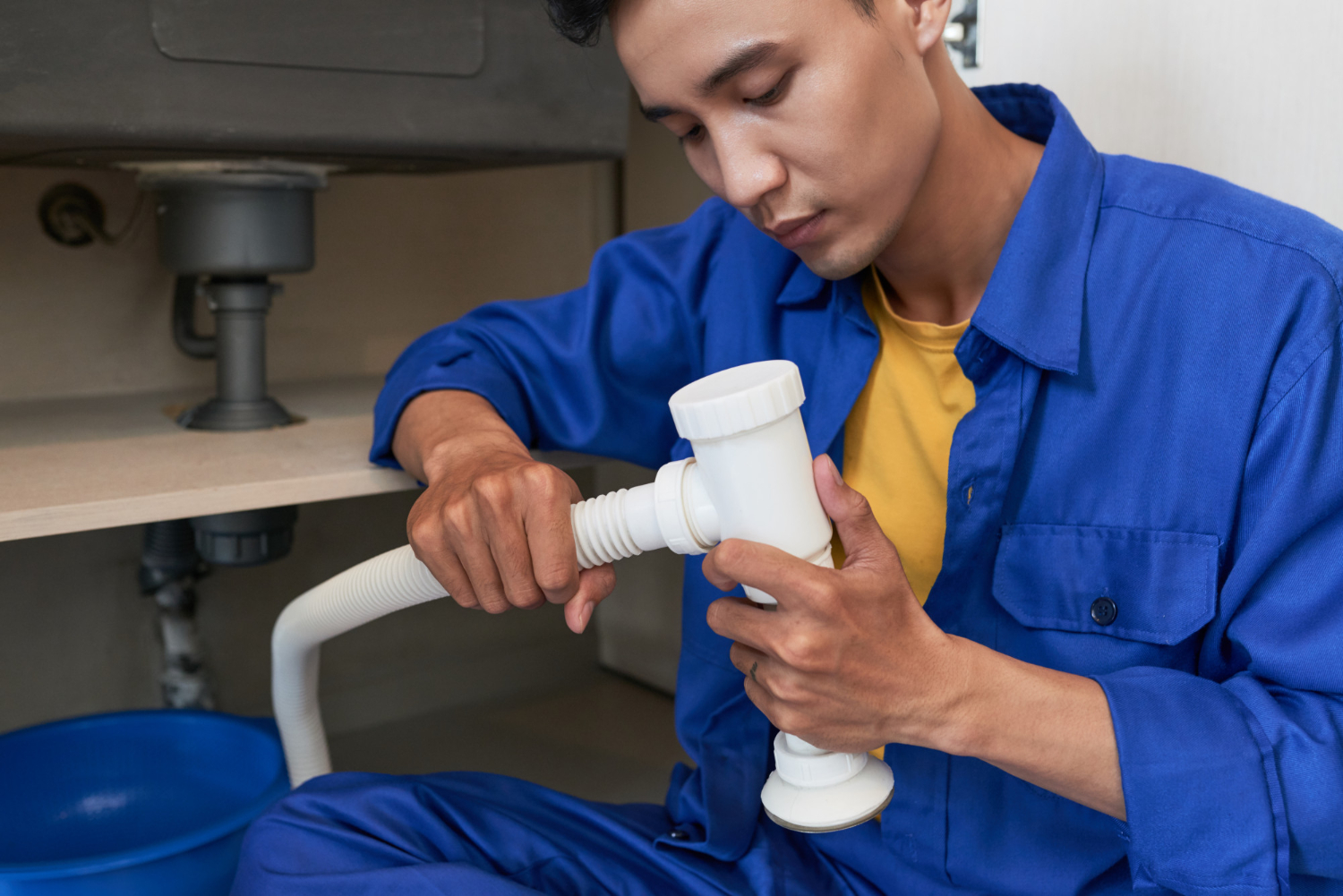$45 Drain Cleaning Special
Schedule OnlineDrain Cleaning Special
4.8 / 5 Ratings based on 1384 reviews
Local Plumbers, Local Reviews
$45 Drain Cleaning Special
Schedule OnlineDrain Cleaning Special
4.8 / 5 Ratings based on 1384 reviews
Local Plumbers, Local Reviews

Flexible plumbing supply lines are a common component in modern residential plumbing systems. These lines, often made of braided stainless steel or reinforced plastic, connect water to sinks, toilets, dishwashers, and other fixtures. They’re prized for their ease of installation and flexibility, but like any plumbing part, they can develop leaks over time. Whether due to age, improper installation, or accidental damage, a leaking supply line can quickly turn into a bigger problem, including water damage or mold growth. If you notice a puddle under your sink or around your toilet, it’s time to act fast.
In this blog post, our professionals from Urgent Rooter will explore two effective ways to stop leaks in flexible plumbing supply lines.
The first and simplest step in stopping a leak in a flexible plumbing supply line is to inspect and tighten the connection. Many leaks occur at the points where the supply line attaches to the shut-off valve or the fixture itself. Over time, these connections can loosen slightly due to vibration, movement, or minor shifting of the plumbing. If you discover a slow drip or small water leak around these areas, the first thing to do is shut off the water supply to the fixture. Once the water is off, dry the area thoroughly so you can examine the fittings and identify the exact source of the leak.
Do you hear the sound of water gurgling through your walls? Have you discovered…
Commercial plumbing plays a crucial role in maintaining operational efficiency and customer satisfaction, especially…
Copper piping has long been regarded as a staple in plumbing systems due to…
If the leak is coming from the nut that secures the line to the valve or fixture, gently tightening it with a wrench can often stop the leak. However, it’s essential not to over tighten as this can strip the threads or crack the fitting, leading to even more significant water leak repair issues. If you're not comfortable doing this yourself, or if tightening doesn't resolve the leak, it’s best to call a professional. A skilled plumbing repair service can quickly determine whether the fitting is the problem or if the supply line itself is compromised.
When tightening the fittings doesn’t stop the leak, the next step is to replace the flexible supply line altogether. The replacement of these lines is relatively straightforward; however, it is imperative to exercise caution to prevent the occurrence of additional complications. Leaks that originate from the body of the hose such as from a crack, split, or pinhole in the material cannot be repaired. In these cases, replacement is the only option.
In order to replace a flexible supply line, it is necessary to first turn off the water and disconnect the old line from both the shut-off valve and the fixture. Once removed, inspect the old hose for damage to confirm it was indeed the source of the leak. Then, install a new supply line of the same length and fitting size. Be sure to use thread seal tape if required, and tighten the connections securely, but not excessively. After the installation of the new line, reactivate the water supply and inspect for any indications of leakage. If everything is dry and secure, you’ve successfully resolved the issue.
However, it is important to acknowledge that water leaks, regardless of their size, can occasionally indicate more significant problems within your plumbing system. That is why numerous householders seek the assistance of leak detection specialists when they encounter persistent leaks or unexplained moisture. Professional plumbers use advanced leak detection tools to identify hidden problems, such as pinhole leaks in copper pipes at Whittier, CA or malfunctioning valves, as the problems might not be obvious to the naked eye.
Stopping leaks in flexible plumbing supply lines comes down to either tightening the connections or replacing the faulty hose. While these tasks can be tackled by homeowners in some cases, there’s no substitute for the peace of mind that comes with hiring a professional plumber. Whether you need a basic repair service or advanced leak detection, don’t wait until a small leak turns into a big disaster. Protect your home and your plumbing system by addressing supply line issues promptly and properly.
Flexible plumbing supply lines are a common component in modern residential plumbing systems. These lines, often made of braided stainless steel or reinforced plastic, connect water to sinks, toilets, dishwashers, and other fixtures. They’re prized for…
Read MoreWhen a water main break occurs, it can quickly escalate from a minor inconvenience to a major disruption. Streets may flood, water…
Read MoreYour plumbing system is one of the most crucial components of your home, responsible for delivering clean water and…
Read More